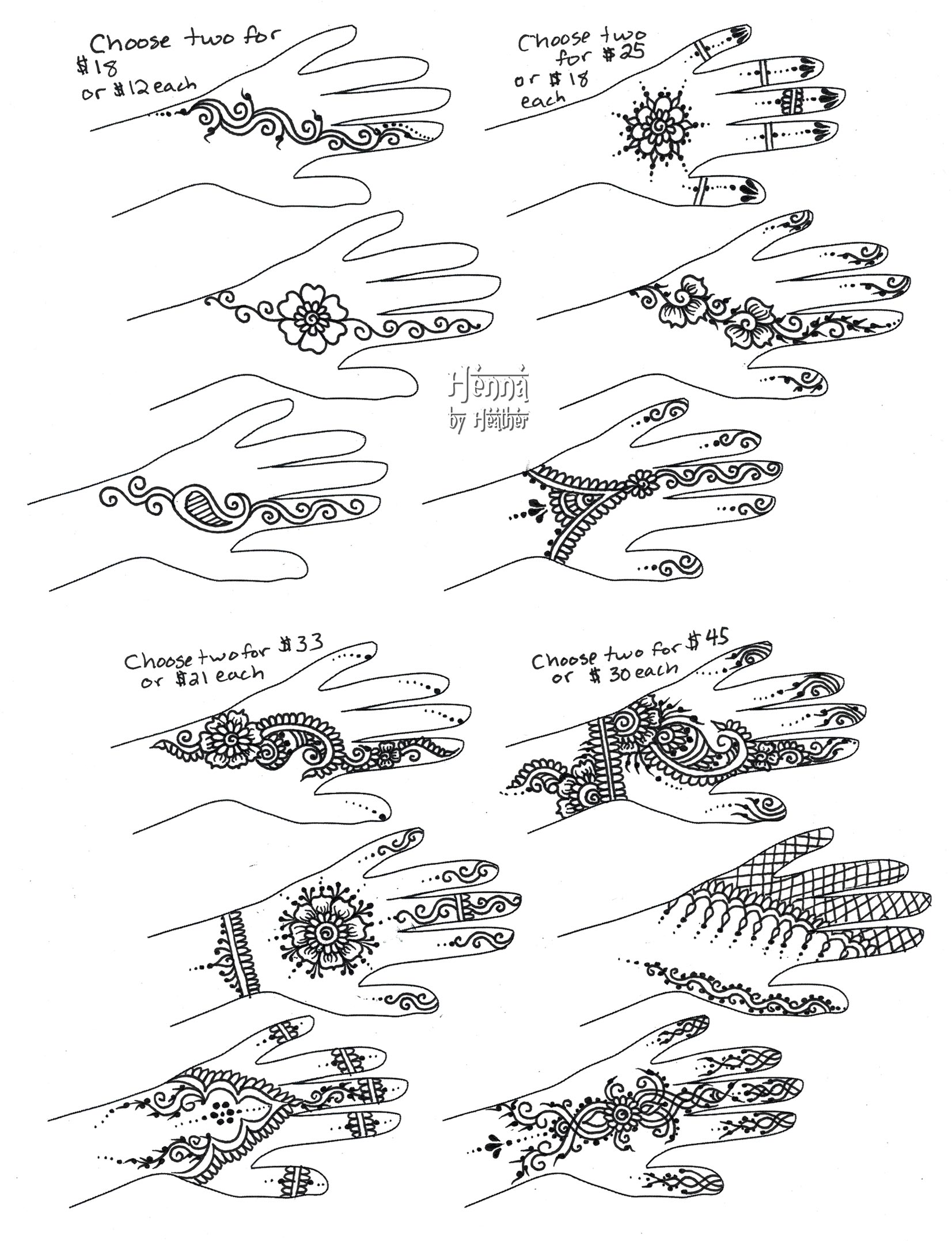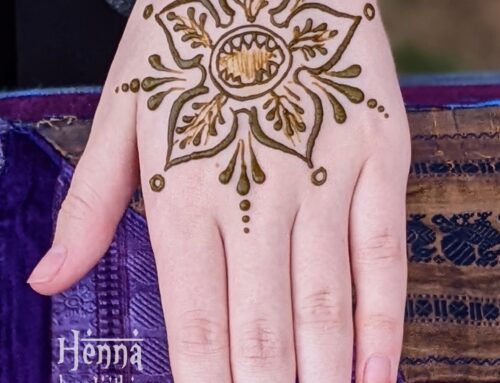Have you ever done mehndi for a Chand Raat event? Well I have, in the past, about ten years ago, and I once swore I would never do one again. It seems that everyone wants henna, but no one wants to pay fair prices for it. I spent my first Chand Raat event endlessly justifying my prices to potential customers who were having none of it. They attempted to bully me into lower prices (it was beyond haggling; it was just mean), or to demand extra henna for free once their design was done or else they refused to pay anything. I was green and without strategy and was beyond taken advantage of. It seems that when everyone has an auntie who “knows how to do henna”, the service gets seriously devalued. There’s not really a distinction made between ugly henna that looks like a five year old could have done it using deathpaste (store bought chemical-laden “instant” mehndi cones) and true artistry accomplished using carefully prepared natural henna.
So what’s a henna artist to do? Just not show up for these huge events that, theoretically, should be one of the biggest markets for henna ever (with such very high demand)? Not take part in this beautiful celebration, which being a henna artist allows us access to that we might not otherwise have? That’s what I did for nearly a decade. I stayed home.
But this year I got asked to do a Chand Raat that happened to be beyond convenient. It seemed foolish to continue my no-Chand-Raat-events-because-the-devaluing-of-my-work-depresses-me stance. I was going to be in town for the biggest Chand Raat event in all of Connecticut; another event I was booked for in the next town over ended just 3 hours before this Chand Raat started. I thought, “Okay, it’s a decade later. Clearly I must have learned something in this time. I can handle it this time. I will strategize, and it will go better.”
Here are some of the things that I figured I needed to consider in creating my strategy:
1) When I say how much henna is “per hand”…I mean “per design on one side of the hand”… This is NOT what the Indian/Pakistani community in New England means by “per hand”. This point seems to be quite non-negotiable; I always lose these discussions
2) $10 per hand is considered cheap within this community, $25 per hand is considered fair, and $60 per hand is considered insanely and unforgivably expensive.
3) Normally at festivals, the hand designs I show (for ONE HAND on ONE SIDE) are $10-35. The average New England customer considers this a HUGE BARGAIN, and my prices are much lower than most. To the Indian/Pakistani community, this means the hands they want (the good ones, of course) are $35 per side, $70 per hand! Beyond unforgivably expensive.
4) I refuse to be bullied into lowering my prices to the same as those of unskilled, untrained, unpracticed people using crappy chemical-laden henna to do horrible trainwrecks of designs.
5) I want to leave happy, and I want the customer to leave happy.
So how can #5 be accomplished, given #1-4? Well, here is how my strategy plays out.
The main idea is to offer henna that I know I can do lightning fast, because it includes only elements that are incredibly time-efficient to draw, and motifs I am beyond extremely comfortable with. This way, I can offer options that look nice on the page, that people will be happy to pay for……but then I will complete them faster than the client could have ever imagined would be possible. The client already picked a price point they were happy with…it just so happens that they had no earthly idea of just how very little time it might take to execute.
As for the starting price point, I will not be offering henna for $10 “per hand” ($5 per side); that is the low end of prices for crappy work, and I do not offer crappy work. So I’m starting at $15 per hand; only slightly more than what people consider “bargain henna”. The designs will be simple, but they will be done well, with natural, healthy henna that will stain a gorgeous dark color and last a long time. People will hopefully be happy that there is a quite-cheap option available.
The choices need to be limited. I really do prefer to create custom designs for people off the top of my head; that way people get something that really suits them, and it stays interesting for me. But in this type of situation, where haggling over the price is the norm, to the point of it feeling abusive, nothing can remain open-ended, unfortunately. There will always be a questioning of whether the customer is really getting what they paid for – shouldn’t it be more? Can’t you add just a little more right here (for no extra pay, of course)? Nope, for this reason, the designs must be set in stone. What you see is what you get.
It shouldn’t take too much time to choose the design. Most people tend to spend about ten times as long looking for a design as I actually spend putting it on them, when they’re choosing from my standard festival books. This is not even remotely efficient, but I’m typically happy to trade efficiency for the customer having enough choices to feel like they really got *exactly* what they wanted. However, at a six hour event with a hundred or more attendees, half of whom are women who probably want henna, efficiency is key. So I have just three designs at each price point for this event. And it’s actually pretty clear which of the designs (whether it be one or two) are the best deal or prettiest within their price category; this makes the decision even easier (of course everyone will pick the pretty one).
As for the prices of the designs offered for the Chand Raat, they are very much discounted from my normal prices. The community is used to extremely cheap henna, and I am going to do my best to meet that expectation without disrespecting my art or myself. The fact that the volume will be so high should make up for the lower per piece costs, especially given that the designs offered are secretly insanely lightning fast. Prices can’t be this low at other times because there is basically never this type of demand for henna anywhere else. My $15 hands are two pieces that would normally fetch $10 each (so 25% off). My $22 hands are two pieces that would normally be $15-20 each (nearly 50% off) . The $30-per-hand designs would normally get $20-25 each. My $40 hands would normally get about $25-30 each side. My $22 and $30 hands are the ones I am hoping people will go for; I’d rather get more than $15 per person, so the $22 designs are obviously much better than the $15 ones, to encourage people to upgrade from the bare minimum, at least. The $30 hands feature elements that sometimes people have in mind that they really want (paisley, peacock, cuff, a fairly full looking wrist-to-finger strip), so they might be the most popular. The $40 hands have that “full hand” look, covering much more of the hand…but I’d MUCH rather do the far-quicker $22 and $30 hands…so honestly I have not made the $40 hands very attractive!
So, below, I offer you my geekily overthought Chand Raat mehndi design choices for 2011! If these design elements are not ones you are particularly quick with, feel free to use the logic outlined here to create your own offerings that you know you will be able to execute mind-bogglingly quickly.

Updated Chaand Raat / Eid Designs for 2021
I looked back on these designs from a decade ago and was mildly embarrassed to see that they were still hugely popular on the interwebs and seeing a lot of traffic. I didn’t want you so I redrew them and added some new ones. Honestly, the differences are quite small, but they’re enough better that I figured they were worth sharing. Also, I updated the prices, pretty much just to reflect inflation.
The fancier designs are an even better deal than before, though… This is in large part because I actually would love to do these more complicated designs this year, as I’ve got to follow COVID protocols in between customers and I’d thus rather spend more time with each customer rather than get through more people in the same time.


